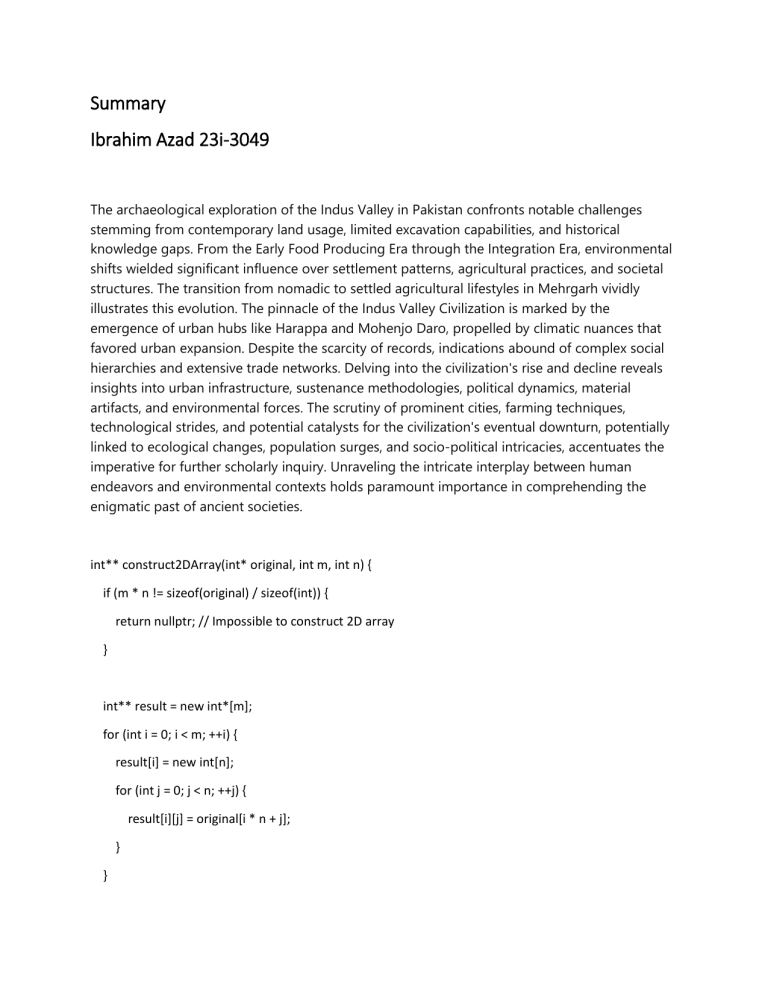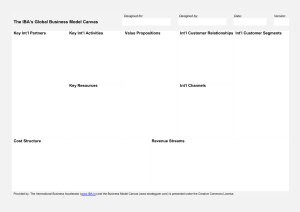
Summary
Ibrahim Azad 23i-3049
The archaeological exploration of the Indus Valley in Pakistan confronts notable challenges
stemming from contemporary land usage, limited excavation capabilities, and historical
knowledge gaps. From the Early Food Producing Era through the Integration Era, environmental
shifts wielded significant influence over settlement patterns, agricultural practices, and societal
structures. The transition from nomadic to settled agricultural lifestyles in Mehrgarh vividly
illustrates this evolution. The pinnacle of the Indus Valley Civilization is marked by the
emergence of urban hubs like Harappa and Mohenjo Daro, propelled by climatic nuances that
favored urban expansion. Despite the scarcity of records, indications abound of complex social
hierarchies and extensive trade networks. Delving into the civilization's rise and decline reveals
insights into urban infrastructure, sustenance methodologies, political dynamics, material
artifacts, and environmental forces. The scrutiny of prominent cities, farming techniques,
technological strides, and potential catalysts for the civilization's eventual downturn, potentially
linked to ecological changes, population surges, and socio-political intricacies, accentuates the
imperative for further scholarly inquiry. Unraveling the intricate interplay between human
endeavors and environmental contexts holds paramount importance in comprehending the
enigmatic past of ancient societies.
int** construct2DArray(int* original, int m, int n) {
if (m * n != sizeof(original) / sizeof(int)) {
return nullptr; // Impossible to construct 2D array
}
int** result = new int*[m];
for (int i = 0; i < m; ++i) {
result[i] = new int[n];
for (int j = 0; j < n; ++j) {
result[i][j] = original[i * n + j];
}
}
return result;
}






